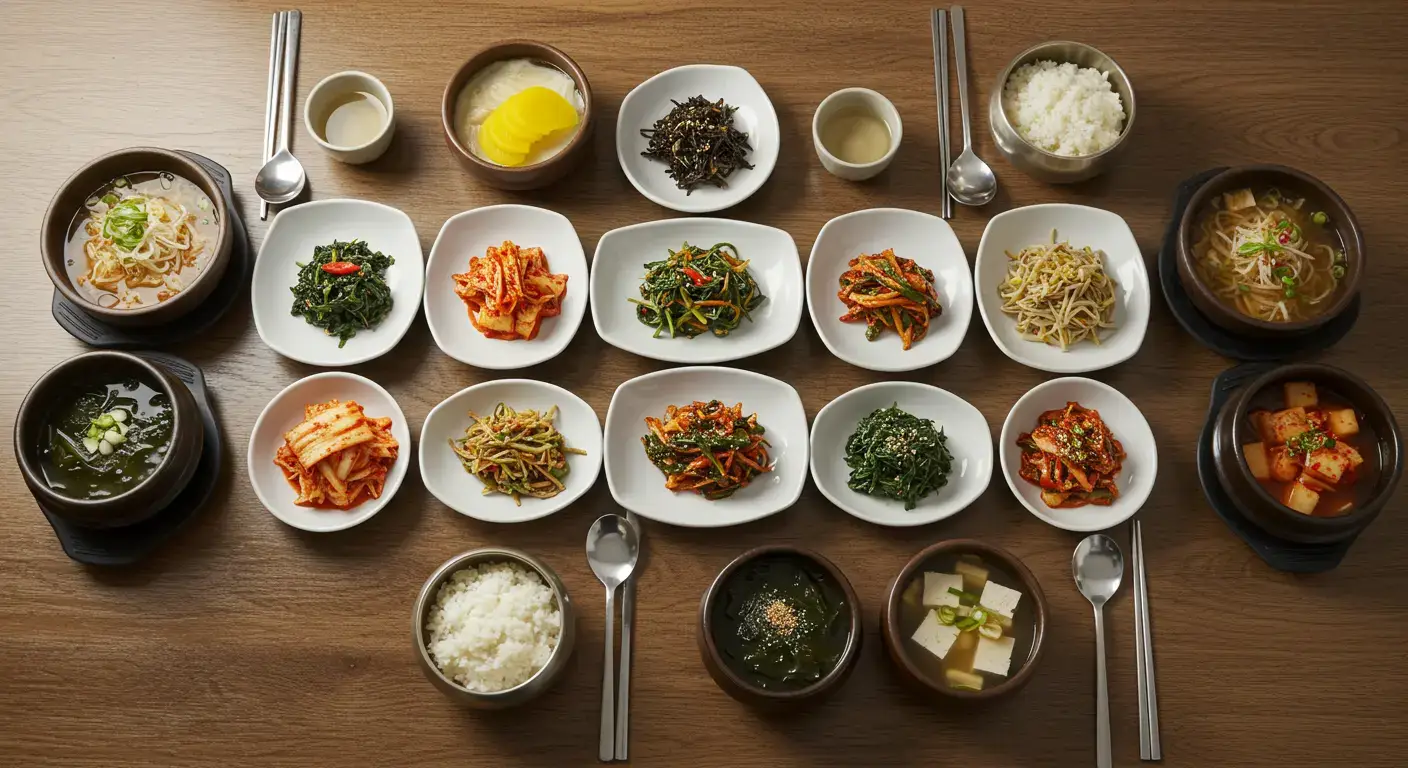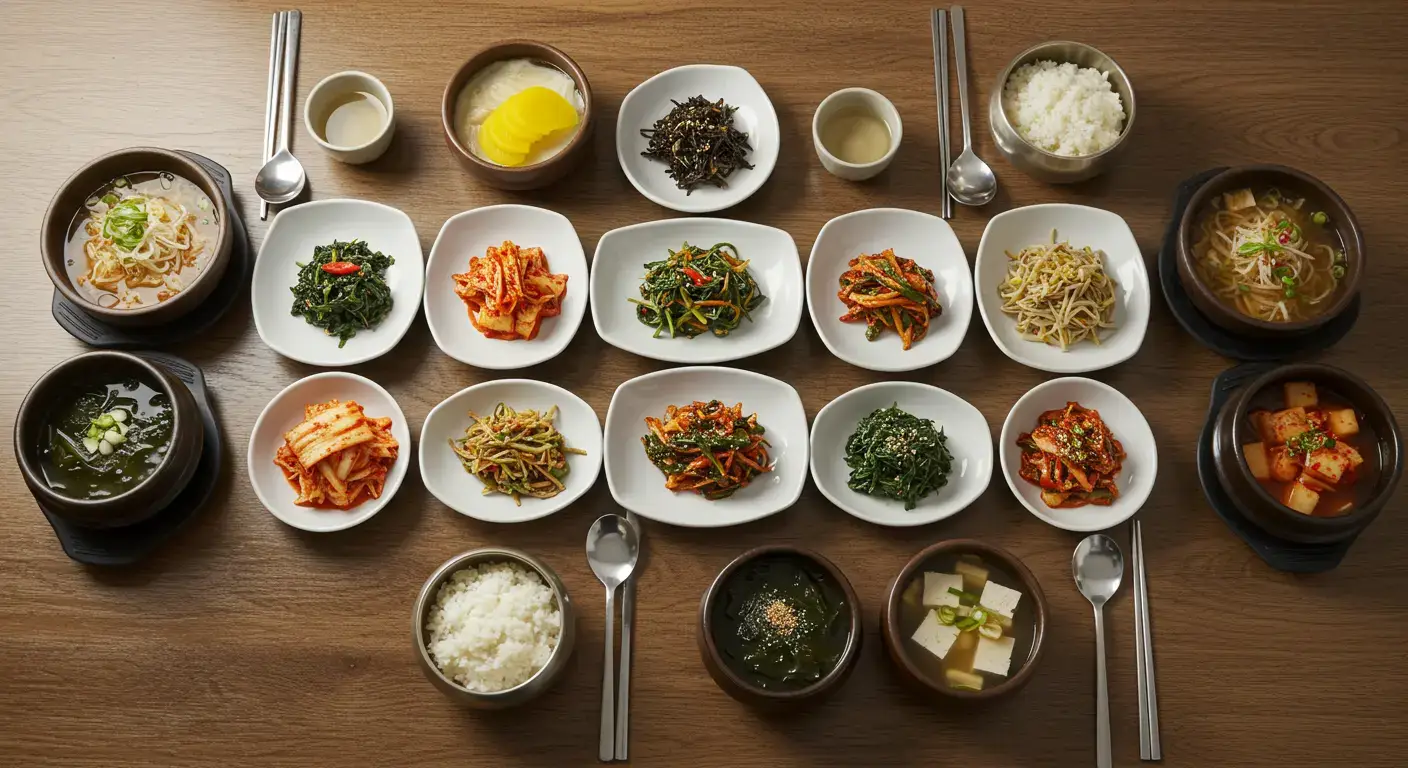
My French friend Marie went to a Korean restaurant for the first time. Before she even ordered, she was surprised to see a table full of side dishes and asked, “What? Did they already serve what we ordered?” When I explained, “No, these are basic side dishes,” she was even more confused.
The look on her face when I asked, “So what’s the main dish?” and she replied, “Well… it’s all main”! Used to the Western order of appetizer-main-dessert, she was surprised to find that the Korean‘s “dressed to the nines” was a sight to behold.
In fact, many of you have probably experienced this: why do foreigners think that KoreanThey really wonder why we eat all these foods at the same time and why we need so many side dishes. It’s too bad we can’t just say, “It’s our culture.
Korean‘s banchan culture is more than just a way of eating; it’s a deep philosophy and wisdom that has been passed down through the millennia. From the idea of the five elements, to community spirit, to efficient preservation techniques… each small dish is a reflection of the wisdom of our ancestors.
Table of Contents
- 1 Definition of Korean Banchan – Understanding the Components
-
27 Philosophies of Korean Side Dish Culture
- -. Harmony in Diversity – The Five Elements and Five Color Foods
- -. A community-driven culture of sharing
- -. Historical Heritage – Joseon Dynasty Table Dressing Tradition
- -. Efficiency and conservation techniques
- -. Visual harmony and table aesthetics
- -. Equality at the table philosophy
- -. Eat well-balanced nutrition
- 3 How Koreans vs. Westerners eat
- 4 The significance of modern Korean banchan culture
- 5 Korean side dish culture FAQs
1. Definition and composition of Korean banchan
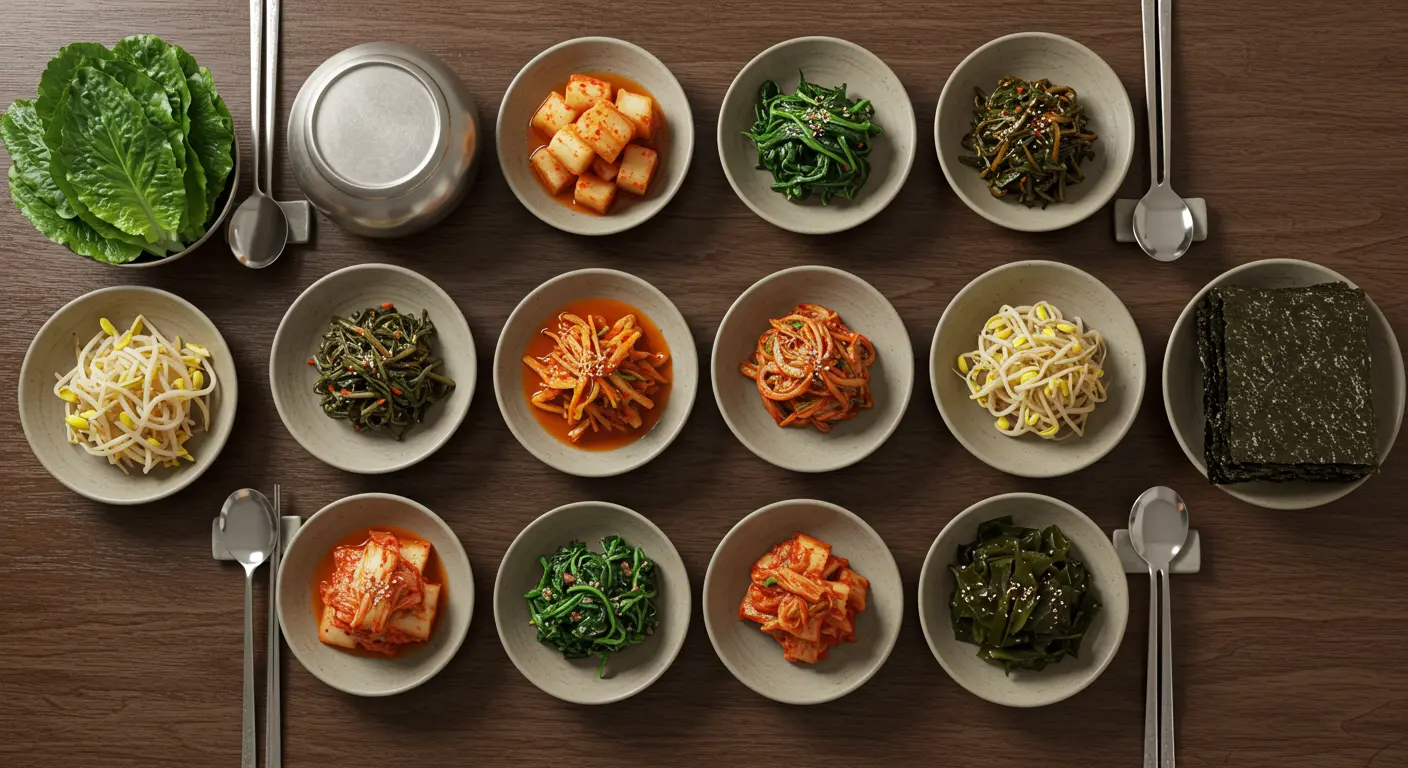
Banchan (飯饌) literally means “cold water served with rice”. However, the KoreanFor him, banchan isn’t just a side to rice, it’s the centerpiece of Korean food culture and an essential part of a complete meal.
-. Kimchi: cabbage kimchi, kakduk, radish kimchi, etc.
-. Herbs: spinach sprouts, bean sprouts, bellflowers, etc.
-. Stewed Foods: Stir-fried anchovies, stewed tofu, stewed lotus root, etc.
-. Groundfish: pollock roe, squid roe, etc.
-. Roasts: Grilled seaweed, fried egg, etc.
Kimchi, in particular, is a Korean It’s the king of side dishes. How to make kimchi anywhere in the world without a kimchi refrigeratoryou can see how important kimchi is to Koreans.
2. 7 Philosophies Behind Korean Banchan Culture
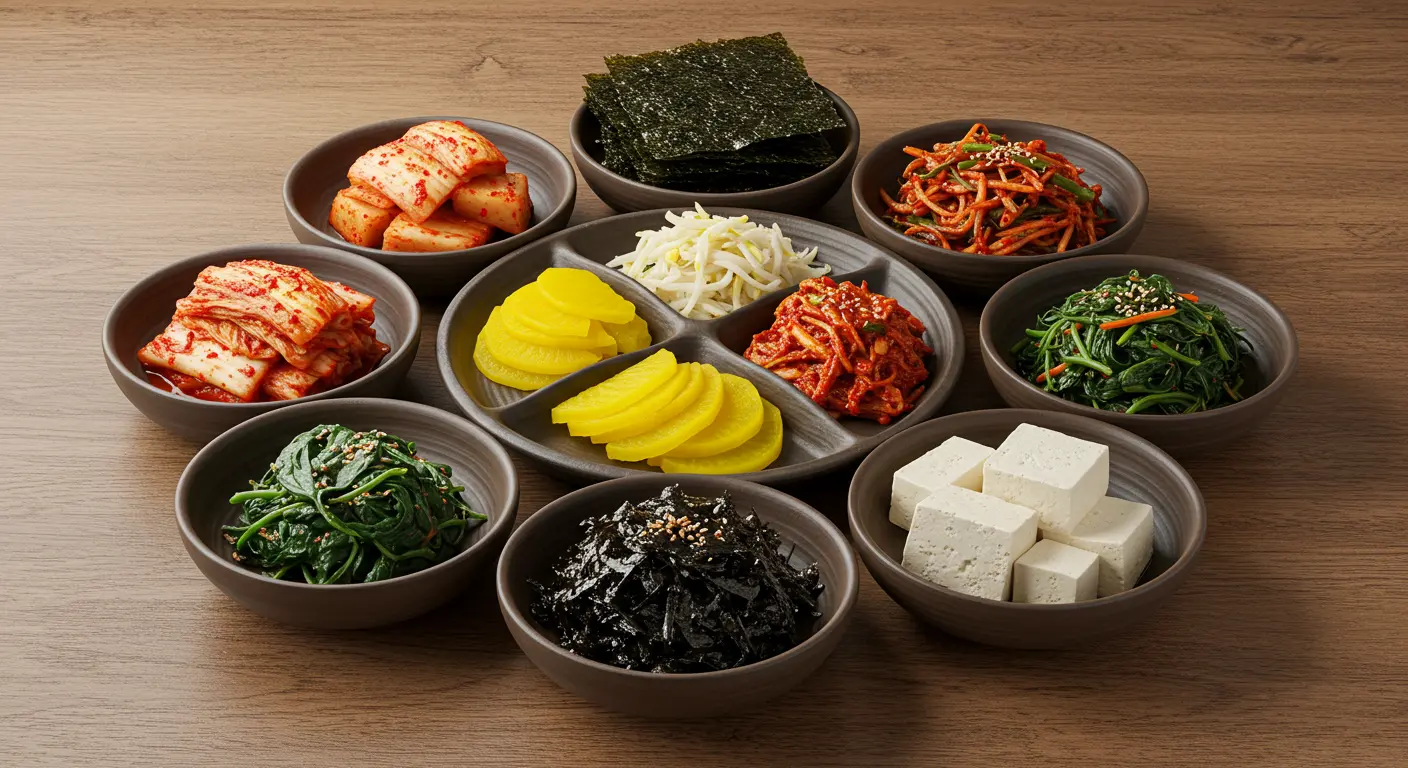
First: The Korean Philosophy of Diversity and Harmony – The Five Elements and Five Color Foods
Korean‘s sideboard contains Five Colorsare evenly distributed. Red kimchi, white radish, black wakame, yellow pickled radish, green spinach… It’s not just a visual delight, it’s a deep Korean philosophy based on the idea of yin and yang.
| Color | Typical Korean Foods | Meaning |
|---|---|---|
| Red | Kimchi, gochujang | Heart, circulation |
| White | Radish, Bellflower | Lungs, Respiratory |
| Black | Wakame, black beans | Kidneys, Genitalia |
| yellow | Beets, eggs | Spleen, Digestive System |
| Abstract | Spinach, buttercups | Liver, detoxification |
Second: Korean community-centered sharing culture
While Westerners eat what’s on their plate, Koreaneats all the side dishes together, which means that the ‘Tastes better together’which is a Korean sentiment.
The culture of eating together from communal bowls rather than individual plates is indicative of the collectivist culture of Korean society, which emphasizes “we” over “me.
Third: Korean Historical Heritage – The Joseon Dynasty Table Setting Tradition
In the Joseon Dynasty court, the 12CompartmentsThis was a top-notch table setting. It’s nine side dishes with rice, soup, and kimchi. Oh my. Korean The tradition continues to this day.
Fourth: Korean efficiency and conservation techniques
Kimchi, pickles, jjigal, and other fermented foods are popular for a reason. Retention Because there were no refrigerators, Koreanhad the wisdom to use fermentation to make food last longer while increasing its nutritional value.
Oops Korean The fermentation culture continues to this day, Seafood dishes like bean sprout soup or bean paste soupto get a taste of that flavor.
Fifth: Korean visual harmony and table aesthetics
Koreanis itself a Artwork. The harmonious arrangement of bowls of different sizes and heights, as well as the balance of colors, is aesthetically pleasing.
Sixth: The Korean philosophy of equality at the table
While Western course meals have an order and sequence, Korean‘s side dishes are all Equivalent positionin the world. Whether it’s kimchi or stir-fried anchovies, they’re all equally precious.
Seventh: Korean balanced nutrition
Eating a variety of side dishes together naturally leads to Nutritional balancewill be aligned. Koreanis the perfect mix of carbohydrates, protein, vitamins, and minerals.
3. How Koreans vs. Westerners eat
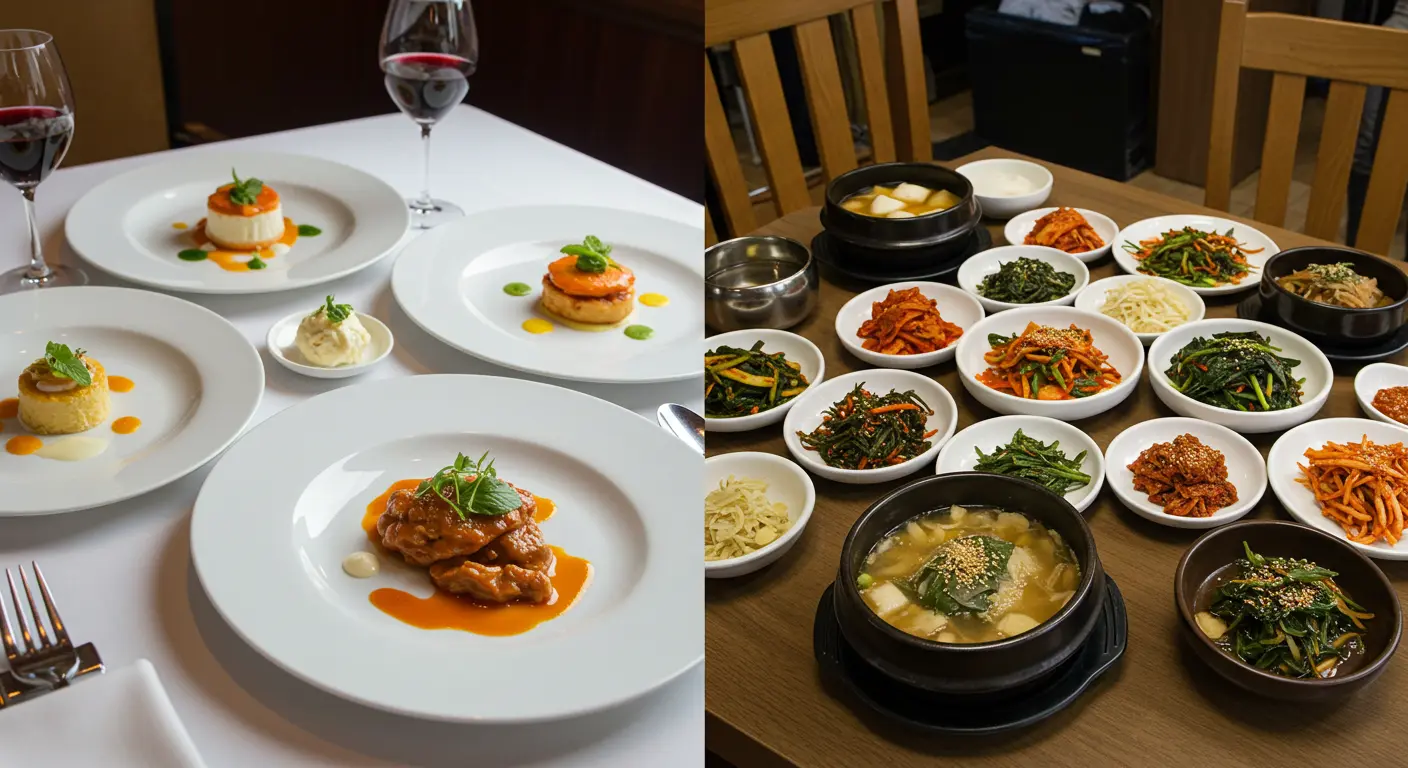
Korean vs Western eating culture
| Separation | Westerner (course meal) | Korean (in Korean dress) |
|---|---|---|
| Order | Appetizer → Main → Dessert | All foods are simultaneously |
| Plates | Personalized plates | Sharing from a communal bowl |
| Philosophy | Individualism, order, and formality | Communitarianism, harmony, and balance |
| Period | 1-2 hours | 30 minutes or so |
This is not just a difference in dietary habits. Differences in cultural valuesin the West. Westerners value personal choice and taste, Koreanis all about a culture of community.
Recent Why buldak fried noodles are gaining popularity around the worldThis Korean It’s not unrelated to the growing interest in food culture.
Also, the A site that introduces Korean food cultureAlso in Korean‘s unique dining culture is gaining global attention.
4. The significance of modern Korean banchan culture
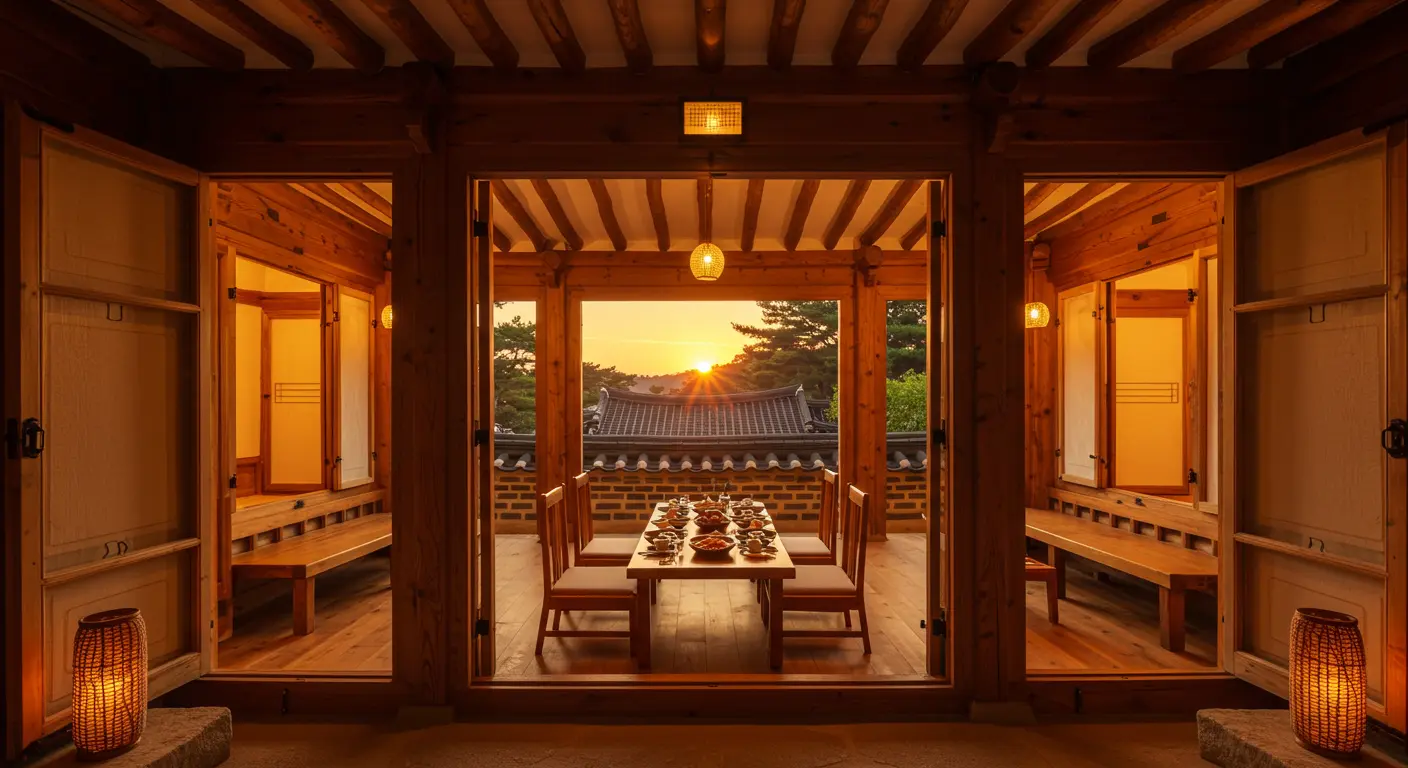
Korean‘s side dish culture is not just a way of eating, it’s a way of life that our ancestors perfected over thousands of years. Philosophy of lifeis the answer. From the harmony of yin and yang to the spirit of community and efficient preservation techniques… there’s a lot of wisdom in every little side dish.
The value of modern Korean banchan culture
- Nutritionally completeThe Model of a Balanced Diet: What Modern Nutrition Strives for
- SustainabilityMinimize Food Waste with Fermentation and Preservation Techniques
- Social interactionBuilding relationships with a culture of sharing
- Mental healthRelieve stress with a variety of flavors and colors
- Cultural identity: Preserving Korean Values in the Age of Globalization
Especially in this age of individualism Korean‘s “culture of togetherness” is even more valuable. Even as we eat more and more alone, there’s still something special about sitting down with family and friends to share a side dish.
Foreigners Korean It’s not just the taste that interests us about food, either. Health Benefits of Traditional Herbal TeasSimilarly, I’m drawn to the philosophy of health and harmony that is embedded in the Korean food culture as a whole.
In today’s rapidly changing world, it’s important to maintain the core values of Korean banchan culture while evolving it into new forms to fit the growing number of single-person households and busy lifestyles.
Eventually Korean‘s banchan culture is a precious heritage that demonstrates the wisdom of living together, and I believe that understanding and preserving this cultural value will be a meaningful gift to future generations.
5. Korean side dish culture FAQs
Learn more about Korean food culture
Buldak fried noodle craze: Why Korea’s ramen exports surpassed $100 million per month?
Learn how Korea’s spicy culture has taken the world by storm and the global success story of K-Food.
Aging Kimchi Without a Refrigerator: 15 Ways to Do It Anywhere in the World
Practical ways to bring the fermented wisdom and art of Korean kimchi culture to life anywhere in the world.
The Complete Guide to Summer Tea – 5 Herbal Teas to Beat the Heat and Cold Tea Recipes
Learn about traditional tea culture, the Korean health philosophy, and the wisdom behind seasonal beverage choices.
A Foreigner’s Complete Guide to Korean Haejang Food – From Bean Sprout Soup to Buk Eotguk
Explore the unique Korean culture of haejang and the science behind traditional foods that restore the body.
More stories about Korean food culture and philosophy await
Korean If you have any more questions about banchan culture, feel free to ask in the comments!
